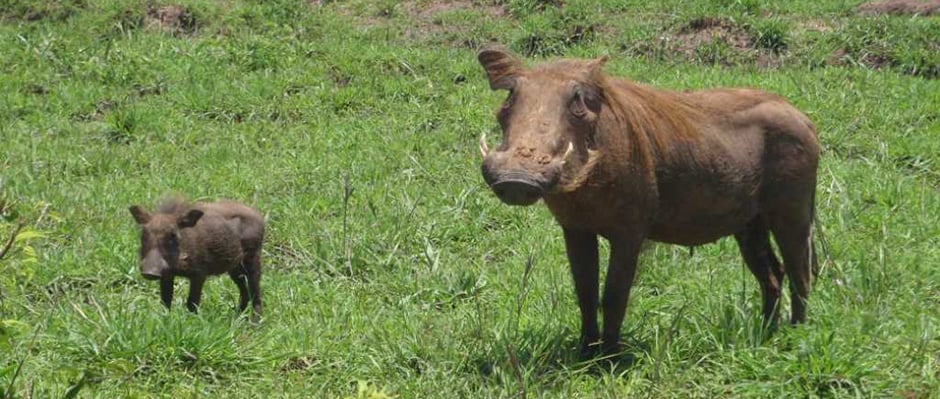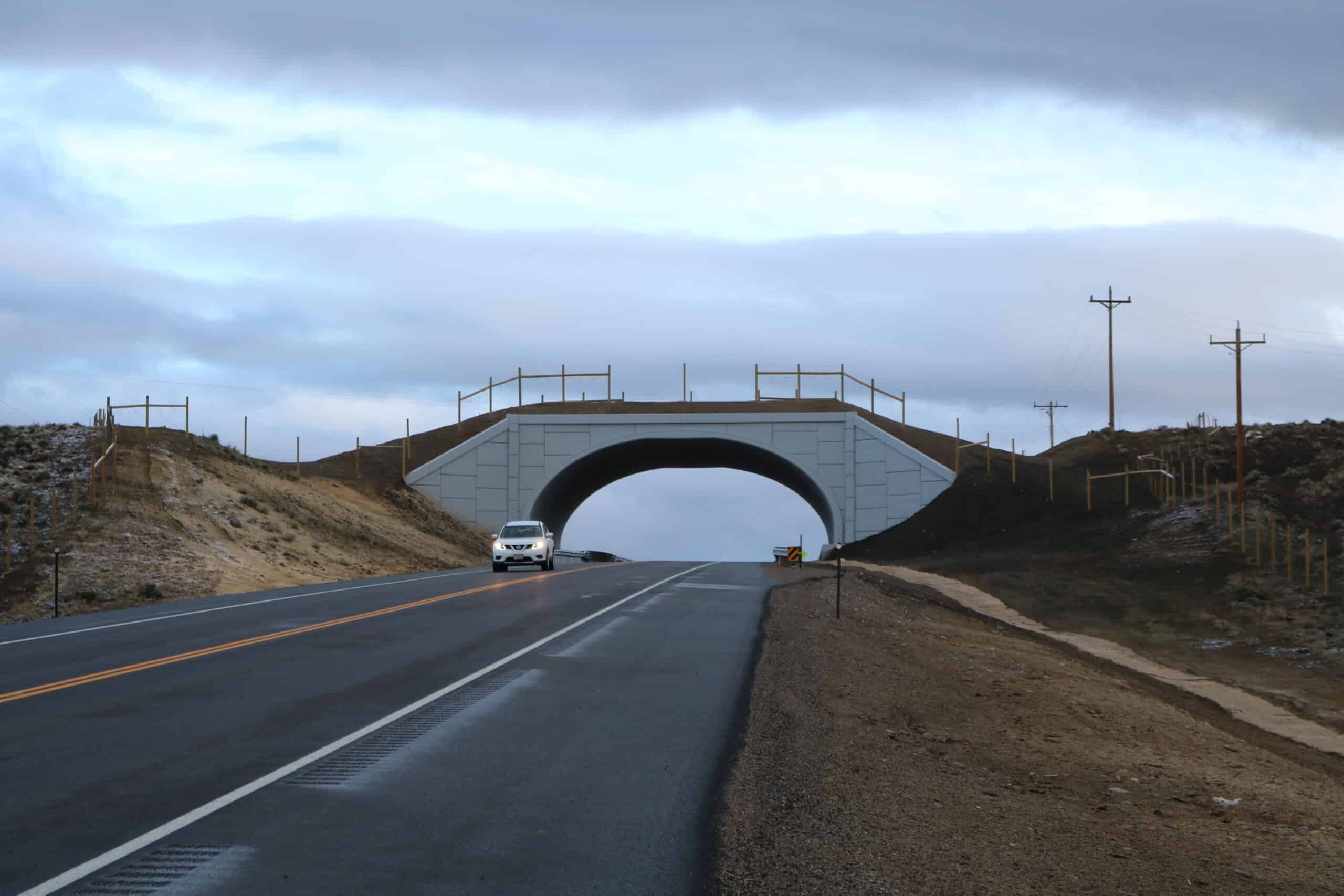Share this article
Trap Techniques: To Aid African Research
Within USDA’s Wildlife Services program, biologist Michael Marlow is known for his varied expertise—from wildlife disease surveillance and feral swine control to nonlethal management of predation damage. Combining all three skills, Marlow recently traveled to the Nwoya and Gulu districts of Northern Uganda to train researchers from Sweden, Uganda, and Kenya on trapping techniques and equipment currently used to capture feral swine in the United States.
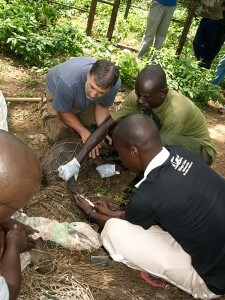
APHIS-WS wildlife biologist Michael Marlow (upper left) traveled to Northern Uganda to train local researchers on nonlethal trapping techniques. Samples were collected from captured warthogs as part of an African swine fever study.
Image Credit: USDA Wildlife Services
African swine fever — a highly contagious hemorrhagic disease of pigs, warthogs, wild boar and feral swine – isn’t a human threat but can devastate domestic hogs. Prevalent in sub-Saharan Africa, outbreaks have occurred in some parts of Europe. Experts hope that learning more about the role of the bushpig in the epidemiology of African swine fever at the wildlife-livestock interface will help Africans deal with the disease and prevent its spread to other countries.
“Our colleagues at the Sweden’s National Veterinary Institute and Uganda’s Makerere University were having difficulty capturing and radio-collaring warthogs and bushpigs,” said Marlow. “The traps and nets being used just weren’t working on these very shy, elusive animals, especially the strictly nocturnal bushpigs. Wildlife Services has successfully used drop-nets and corral traps to control invasive feral swine in the United States,” said Marlow. “We hope these same techniques can be used in Africa for porcine research.”
Drop-nets and Corral Traps
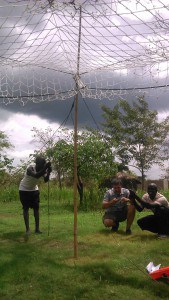
Researchers in Uganda set up one of the drop-nets brought over by APHIS-WS Michael Marlow for use in capturing warthogs and bush pigs.
Image Credit: USDA Wildlife Services
To help increase trapping success and improve the group’s African swine fever sampling and monitoring efforts, Marlow went to Uganda to demonstrate how to use two tools to catch multiple animals at once — an electromagnetic drop-net system and a drop-door corral trap.
The drop-net system uses a large, square net hung from four corner poles. An electromagnet secures each corner to a weight. A wireless remote-control can turn off power to the electromagnet, allowing the net to drop over animals lured under the net with bait. The team captured two warthogs with the drop-net system, developed by colleagues in Oklahoma.
In the second method, the animals’ movements trip a trigger line that causes the gate to drop closed, confining the animals inside a welded metal corral.
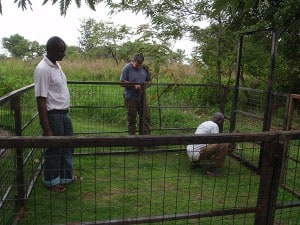
Final touches are placed on the drop door corral trap. Animals are lured into the corral with bait. Once inside the corral, their movements trip a trigger line that causes the door to close, trapping the animals inside.
Image Credit: USDA Wildlife Services
“We likely would have caught more animals, but the weather wasn’t ideal, coming during the transition between dry and wet seasons. Suddenly increased food and water made it difficult to predict where the warthogs and bushpigs would be,” said Marlow.
Enthusiasm remains high that these new tools will boost capture success and allow researchers to gain valuable information about African swine fever in warthog and bushpig populations.
Wildlife Services is a Strategic Partner of TWS.
Header Image: Image Credit: USDA Wildlife Services



